Rank Species | Genus Sicyos Higher classification Sicyos | |
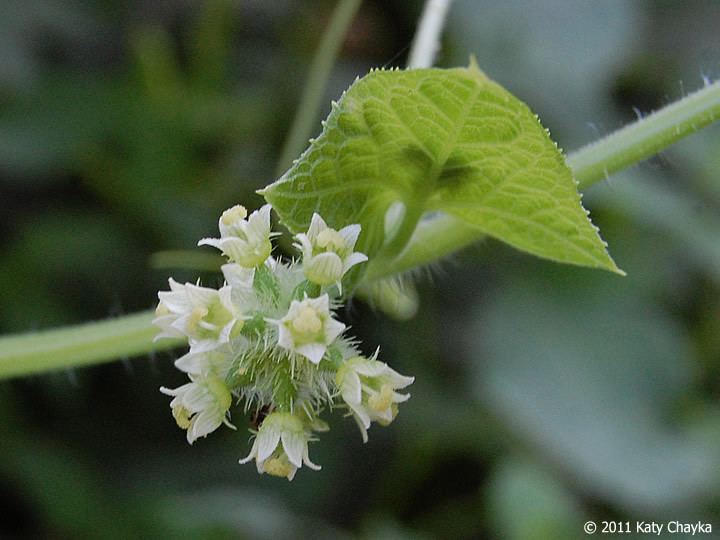 | ||
Similar Sicyos, Ambrosia trifida, Cucurbits, Solanum carolinense, Coreopsis lanceolata | ||
Mynature apps identifying bur cucumber sicyos angulatus
Sicyos angulatus, the oneseed bur cucumber or star-cucumber is an annual vine in the gourd family, Cucurbitaceae, native to eastern North America. The plant forms mats or climbs using tendrils. The leaves are palmately veined and lobed, the flowers are green to yellowish green, and the fruits form clusters of very small pepos.
Contents
- Mynature apps identifying bur cucumber sicyos angulatus
- Description
- Distribution and habitat
- Ecology
- Uses
- References
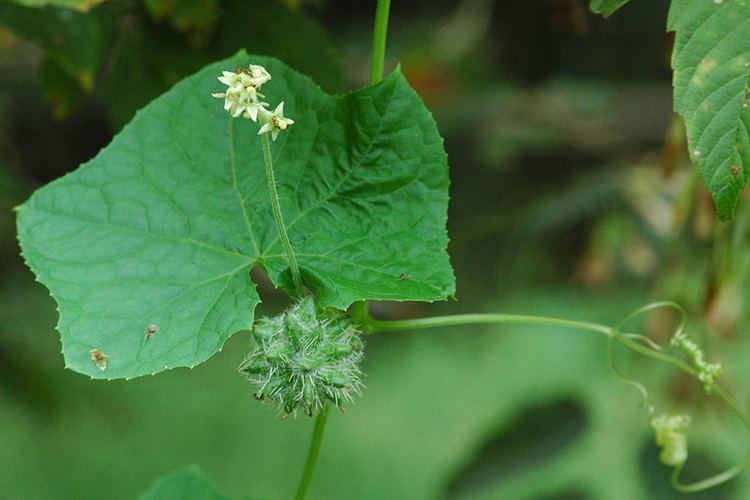
Description
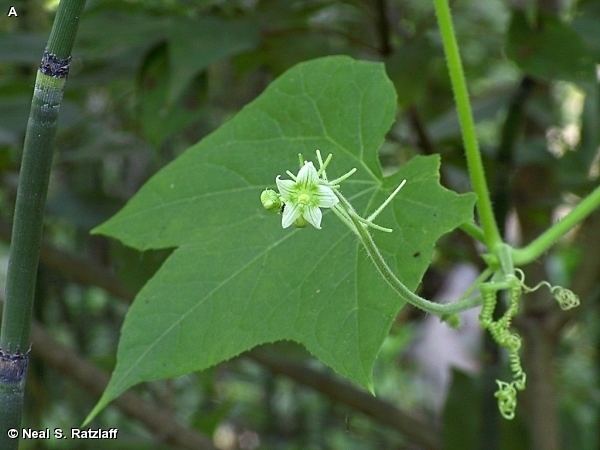
The vine produces long branching annual stems that climb over shrubs and fences or trail across the ground. The stems are hairy, pale green and furrowed. The alternate leaves have three to five palmate lobes and can be 8 in (20 cm) across. The margin is slightly toothed, the upper surface of the blade is usually hairless and the under side has fine hairs, especially on the veins. The petiole is thick and hairy, and about 5 in (13 cm) long. The leaf is deeply indented where it is attached to the petiole. Opposite some of the junctions formed by the petiole and stem, grow branched tendrils, and at others there are flower shoots. The flowers are monoecious, with separate male and female blooms. The male flowers are in long-stemmed racemes. Each flower is about 0.3 in (0.8 cm) wide, with a calyx with five pointed teeth, a whitish, green-veined corolla with five lobes, and a central boss of stamens. The small female flowers are bunched together on a short stalk, each having its ovary enclosed in a spiny, hairy fruit; one seed is produced by each flower. The fruit is about 0.5 in (1.3 cm) long, green at first but becomes brown with age; it is dispersed by animals which come into contact with its bristly surface.
Distribution and habitat

S. angulatus is native to Ontario and Quebec in Canada, and the eastern and southern parts of the United States as far west as North Dakota and Texas. It grows in fertile, moist habitats such as floodplain areas, damp grassland, thickets, bushy places, river banks, ditches and field verges. It appreciates disturbed ground.
Ecology
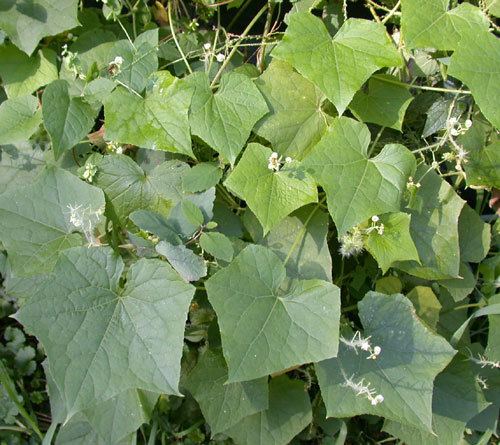
Bumblebees and honey bees, as well as various flies, sphecid wasps and vespid wasps are attracted to the nectar produced by the flowers. Some bees also collect pollen from the male flowers. The horned squash bug and Anasa repetita feed on the plant, as do the spotted cucumber beetle, the striped cucumber beetle and the leaf beetle Acalymma gouldi. Herbivorous mammals seem to avoid the plant.
Uses
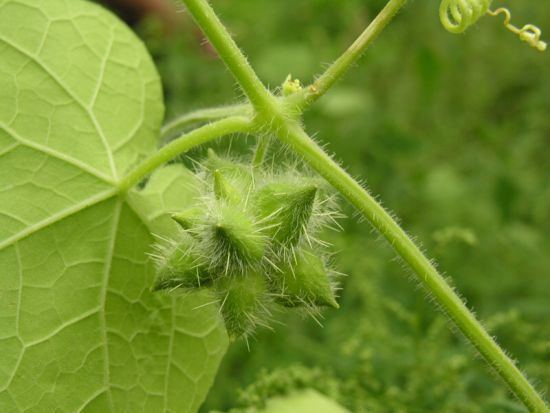
The foliage of Sicyos angulatus can be cooked and eaten as a green vegetable, and the fruits can also be eaten, but because of their size are of little value. A decoction of the plant has been used to treat venereal disease.

